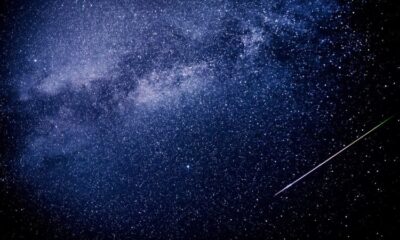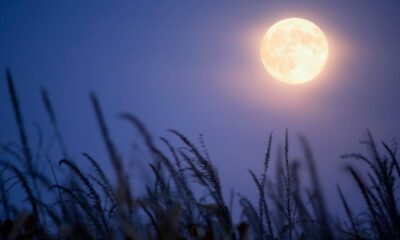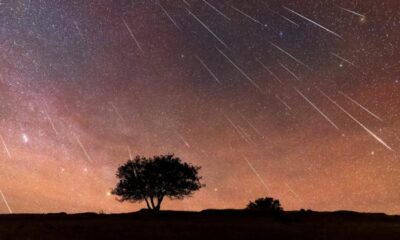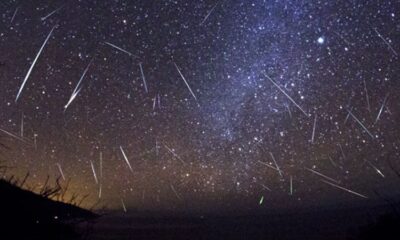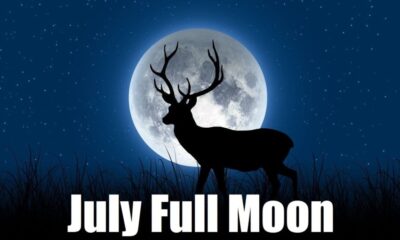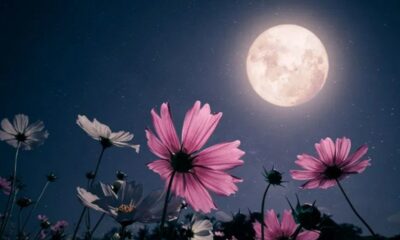Science
Everything You Need to Know about Skywatching in June 2025: Full Moon, New Moon, Arietid Meteors, and Planetary Marvels

June 2025 promises to be a month that stargazers will never forget because of the variety of uncommon and spectacular astronomical events that will take place in the skies. June 2025 is a once-in-a-generation celestial extravaganza, not just another month on the astronomical calendar. In June 2025, there will be a perfect storm of astronomical phenomena that will provide you with something spectacular to watch virtually every night. Everything you need to know about skywatching in June 2025 is included in this extensive guide.
This month offers a wide range of celestial delights, from Venus at its brightest to a rare lunar occultation of Mars. From planetary alignments to meteor showers, the June 2025 sky events are accessible to everyone with a high-end telescope or simply their eyes and excitement.
June 1: Venus Becomes the Main Event
Venus begins its journey on June 1 and achieves its maximum western elongation, shining brightly in the early morning sky shortly before sunrise. It will be a unique opportunity for spectators in both the northern and southern hemispheres to observe Venus’s brilliance without being obscured by the sun’s glare.
When the neighboring planet reaches its maximum western elongation on June 1st, Venus’s elongation in 2025 hits its peak. Accordingly, Venus will shine at an amazing magnitude of -4.4 in our early sky when it is at its furthest from the Sun.
About two to three hours before sunrise, Venus will be shining brightly in the eastern sky. Because of its brightness, you can frequently see it even at twilight hours. Look toward the Pisces constellation in the predawn sky for the greatest view.
June 2: Maximum Visibility of the Great Hercules Cluster
On June 2, the Hercules Star Cluster, also known as Messier 13, one of the night sky’s most spectacular objects, reaches its zenith. More than 100,000 stars make up this dense globular cluster, which is visible as a sparkling orb in the constellation Hercules through binoculars or small telescopes.
This will be an excellent time to observe the Great Hercules Cluster (Messier 13). This globular cluster has around 100,000 stars packed in a sphere about 150 light-years across. It seems like a hazy star through binoculars, but its entire grandeur is revealed using a small telescope.
June 7: Daytime Arietid Meteor Shower
The Arietid meteor shower peaks on June 7, which is a more elusive phenomenon. The greatest time to see the Arietids is during the day, unlike regular meteor showers. Early risers may catch a glimpse of a few streaks before sunrise, although it is difficult to see them with the naked eye. For those who prefer a virtual experience, NASA’s Meteor Shower Portal offers a digital view into the activity.
The Daytime Arietids peak during the day, although the majority of June 2025’s meteor showers happen at night. But there’s a chance you’ll see some early meteors in the sky before daybreak. The constellation Aries seems to be the source of these fast meteors.
Highlights of the Mid-Month: Nebula Views, Mars Encounters, and the Strawberry Moon
June 11: The Enchanting Strawberry Moon
The full “Berry Moon” on June 11 is one of the most anticipated events in the June 2025 skywatching calendar. This moon, which gets its name from the ripening of wild strawberries in North America, has both Indigenous and European cultural importance. It honors early summer harvests by illuminating the night with its brilliance, even though it doesn’t turn red. Also referred to as the “Honey Moon” or “Mead Moon,” it was traditionally connected to honey gatherings and weddings.
On June 11, 2025, the Strawberry Moon will attain full illumination at 07:45 UTC. Because it will be the lowest full moon in the Northern Hemisphere in 18.6 years, this one is especially noteworthy. The atmospheric effects will give it a breathtaking golden aspect.
Although it is also known as the Rose Moon or Honey Moon in European customs, this moon was called by Native American tribes in honor of the strawberry harvesting season. Because of its low trajectory, the moon will appear larger and more colorful, making it ideal for photography.
On June 16, Mars makes a stunning conjunction with the brilliant star Regulus in the constellation Leo. Just after sunset, the four-star system Regulus will shine close to the red planet, creating a visually striking combination for telescope viewers. The Butterfly Cluster, which gets its name from its wing shape, will also be at its best that night, enhancing the night’s astronomical display.
June 21: Summer Solstice
The longest day of the year, June 21st, is the summer solstice in 2025 if you’re in the Northern Hemisphere. The warm weather and steady atmospheric conditions make for great viewing prospects, even if the nights will be shorter.
The longest day of sunlight in the Northern Hemisphere and the official beginning of summer will be Saturday, June 21, which is also known as the summer solstice. On the other hand, the day has the shortest night of the year, and as the northern hemisphere approaches the fall and winter seasons, each day becomes slightly shorter.
The Lagoon Nebula (Messier 8) reaches its peak on June 22, later in the month. This bright cloud of gas and young stars is around 5,200 light-years away from the Milky Way’s core. It provides an extraordinary chance to observe star formation in real time and is visible with binoculars under dark skies.
A Dazzling Finale- Dark Skies, Meteor Showers, and Planet-Moon Encounters
June 25: The New Moon Advantage
Sky conditions for deep-sky observation continue to improve as the month comes to an end, adding excitement to the June 2025 sky watching guide. For astrophotographers, a new moon on June 25 brings a darker sky, which is perfect for observing nebulae, faint galaxies, and the Milky Way’s radiant core.
June 27: Meteor Shower Opportunities
The peak of the Bootid Meteor Shower occurs on June 27. This shower, which is known for its unpredictable rates, can generate anywhere from a few to hundreds of meteors every hour. The weather is perfect for meteor viewing, with only a thin crescent moon visible.
Two days after the New Moon, on June 27, the June Bootids reach their height. The number of meteors produced by this changeable shower might range from a few to hundreds per hour. Even the smallest shooting stars can be seen because of the gloomy skies.
June 30: Waxing Crescent Moon
Last but not least, the waxing crescent moon will pass close to Mars in the evening sky on June 30 at a distance of slightly more than one degree. The couple will be visible side by side to observers wearing binoculars.
-

 Business4 weeks ago
Business4 weeks agoGoing Beyond Expectations: Apex Service Partners and Putting People First
-

 Business4 weeks ago
Business4 weeks agoKurt James Wichman Explains How Global Brands Go Local
-

 Entertainment4 weeks ago
Entertainment4 weeks agoVISHAAD, Starring Rajeshwar, Ashish Vidyarthi and Ketaki Narayan, Heads to KIFF 2025!
-

 Real Estate4 weeks ago
Real Estate4 weeks agoStephen Monro on the Evolution of Mediation Services in Real Estate
-

 Business3 weeks ago
Business3 weeks agoWhy Hundreds Choose Movers in Raleigh for a Fresh Start
-

 Travel3 weeks ago
Travel3 weeks agoBwindi’s Gorilla Tourism: Saving Wildlife, Empowering Communities
-

 Tech3 weeks ago
Tech3 weeks agoGoogle Offers New Travel-related Features To Search And Launches Its AI “Flight Deals” Tool Around The World
-

 Education3 weeks ago
Education3 weeks agoJoseph Curran: Using Legal Writing and Advocacy to Simplify Complex Issues for Clients

